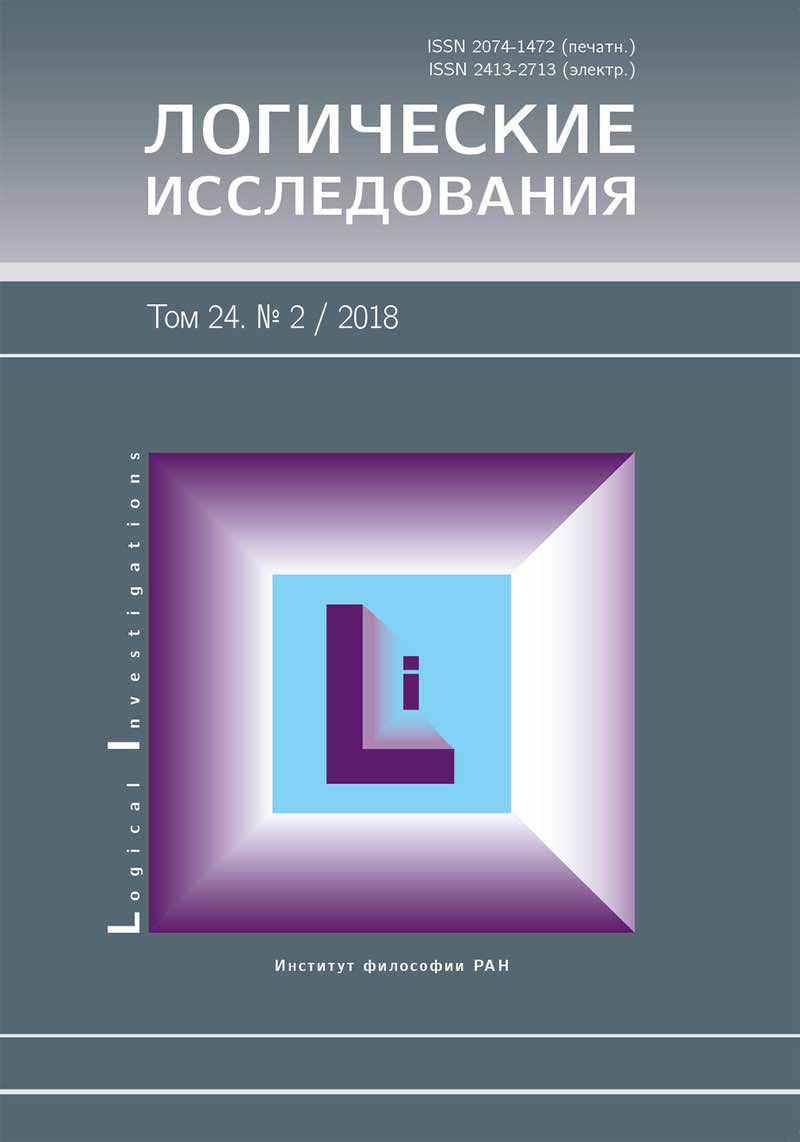Multiple meaning and typology of terms
##plugins.themes.bootstrap3.article.main##
Abstract
The author presents the typology of terms built from the nature of their sign relationship and ways of implementing the references. By the nature of the sign relationship, the signs can be divided into normal (actual signs, signs that have a public, intersubjective existence) and conventional (arbitrary signs, signs introduced “by agreement”, including based upon an individual declaration or decision of the author). Normal terms are single (personal names) and common. The “by agreement” terms include conventional (arbitrary) terms and signs with a “variable convention” (introduced as blank signs to extend them upon specific communicative contexts of tasks, proofs, examples, etc.). Conventional terms include both natural language terms (for example, scientific names) and symbolic designations. At least three types of terms with a variable convention can be identified: actual “variables” (with similar functions to common terms with particular suppositions), “conditional names” (with names by agreement and normal names they are constants and have differences in the context of their use) and “parameters” (abstract names; symbols conceived as the names of exact known objects; they occupy an intermediate position between “variables” and “conditional names”). The same sign form functioning as a sign of any of these types could in different communicative situations be associated with different objects, but the nature of the change of this referent depends on the type of sign. The distinction of these types of signs allows us to clarify the functioning principles of logical and mathematical symbols, as well as the history of their invention. In particular, we can shed light upon the introduction of letterings into logic. DOI: 10.21146/2074-1472-2018-24-2-158-166
##plugins.generic.usageStats.downloads##
##plugins.generic.usageStats.noStats##
##plugins.themes.bootstrap3.article.details##
How to Cite
Shiyan T. A. Multiple meaning and typology of terms // Logicheskie Issledovaniya / Logical Investigations. 2018. VOL. 24. № 2. C. 158-166.
Issue
Section
Papers
References
Башмакова И.Г., Колмогоров А.Н., Юшкевич А.П. Знаки математические // Математическая энциклопедия: в 4 т. / Гл. ред. И.М. Виноградов. Т. 2. М., 1979. 1104 c.
Башмакова И.Г., Колмогоров А.Н., Юшкевич А.П. Математические знаки // Математический энциклопедический словарь / Гл. ред. Ю.В. Прохоров. М., 1995. 897 c.
Варден Б.Л. ван дер. Пробуждающаяся наука: Математика Древнего Египта, Вавилона и Греции. М.: ЛКИ, 2007. 459 c.
Евклид. Начала: в 3 т. / Пер. с греч. и коммент. Д.Д. МордухайБолтовского при ред. участии М.Я. Выгодского, И.Н. Веселовского. Т. 2. Книги VII–X. М.;Л., 1949. 506 c.
Евклид. Начала / Предисл., пояснит. введ. и доп. М.Е. ВащенкоЗахарченко. Киев, 1880. 744 c. [Репринт: М., 2013].
Фреге Г. Булева вычислительная логика и мое исчисление понятий // Фреге Г. Логика и логическая семантика: Сборник трудов / Пер. с нем. Б.В. Бирюкова под ред. З.А. Кузичевой. М., 2000. С. 158–193.
Cartes R. des. Geometria. Lugduni Batavorum [Leyden], 1649. 350 c.
Descartes R. La geometrie // Descartes R. Discours de la methode. Leyde [Leyden], 1637. 527 c.
Viete F. In artem analyticem isagoge. Tours, 1591. 90 c.
Башмакова И.Г., Колмогоров А.Н., Юшкевич А.П. Математические знаки // Математический энциклопедический словарь / Гл. ред. Ю.В. Прохоров. М., 1995. 897 c.
Варден Б.Л. ван дер. Пробуждающаяся наука: Математика Древнего Египта, Вавилона и Греции. М.: ЛКИ, 2007. 459 c.
Евклид. Начала: в 3 т. / Пер. с греч. и коммент. Д.Д. МордухайБолтовского при ред. участии М.Я. Выгодского, И.Н. Веселовского. Т. 2. Книги VII–X. М.;Л., 1949. 506 c.
Евклид. Начала / Предисл., пояснит. введ. и доп. М.Е. ВащенкоЗахарченко. Киев, 1880. 744 c. [Репринт: М., 2013].
Фреге Г. Булева вычислительная логика и мое исчисление понятий // Фреге Г. Логика и логическая семантика: Сборник трудов / Пер. с нем. Б.В. Бирюкова под ред. З.А. Кузичевой. М., 2000. С. 158–193.
Cartes R. des. Geometria. Lugduni Batavorum [Leyden], 1649. 350 c.
Descartes R. La geometrie // Descartes R. Discours de la methode. Leyde [Leyden], 1637. 527 c.
Viete F. In artem analyticem isagoge. Tours, 1591. 90 c.
